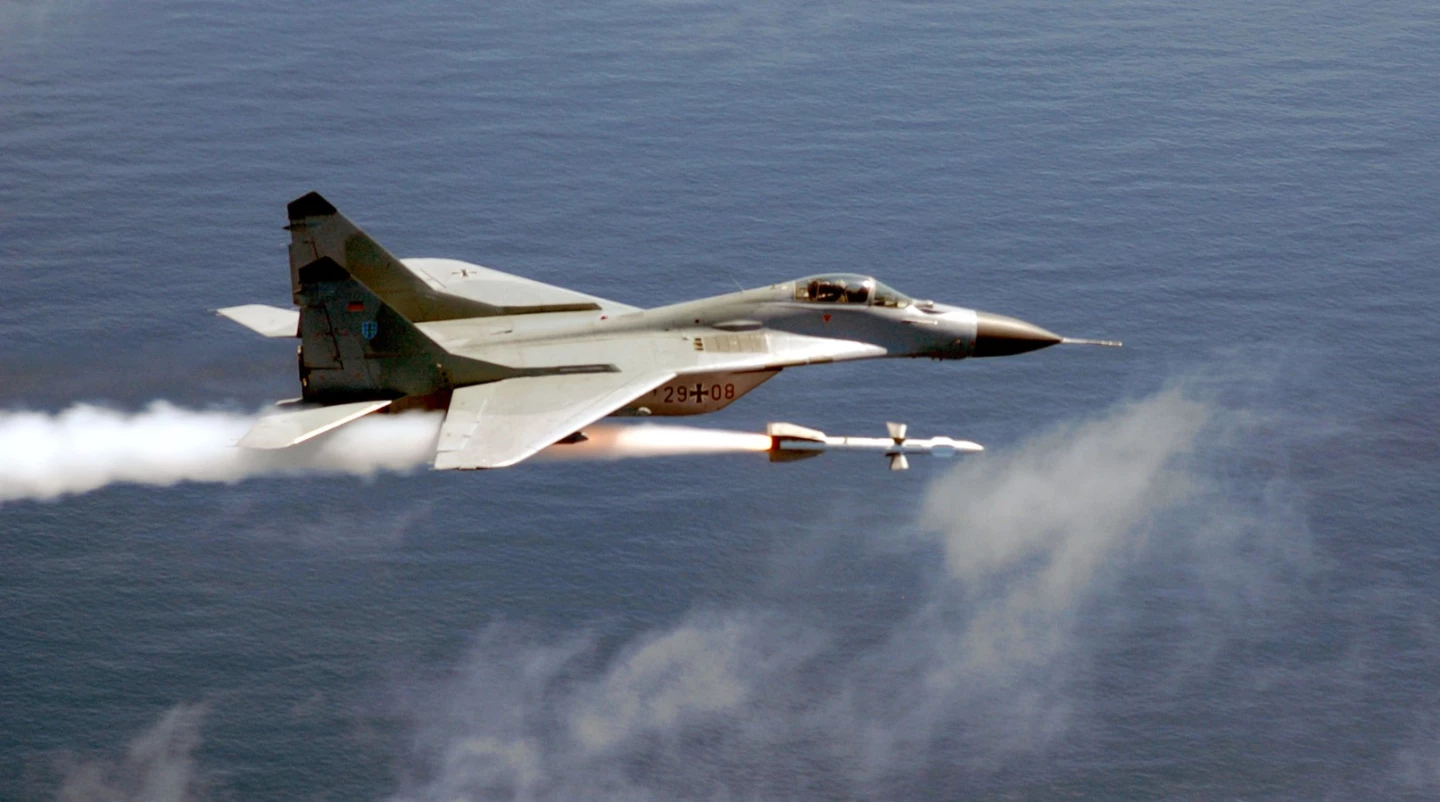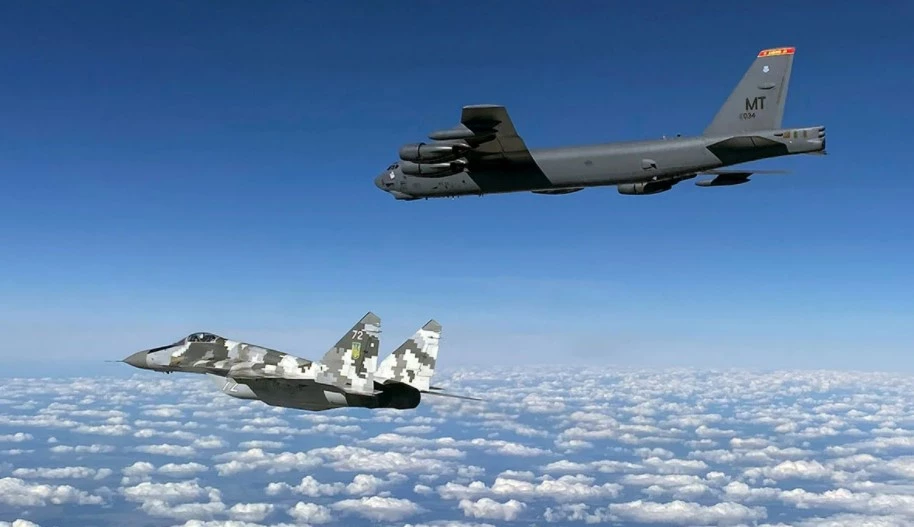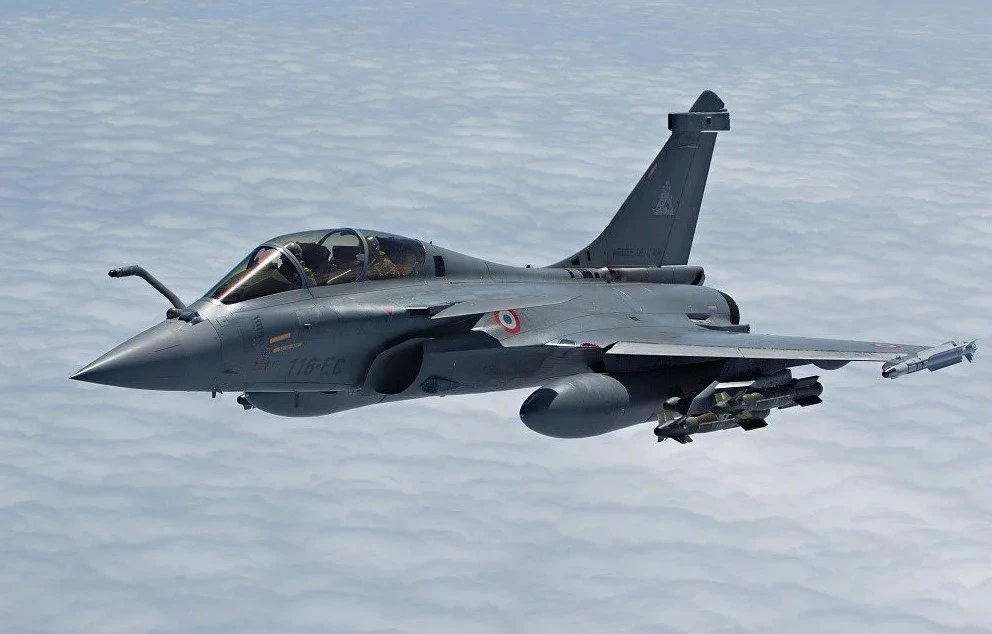With the Russian invasion of Ukraine well into its sixth month, the war has settled into a baffling pattern that defies the expectations of both sides. The most extreme example is the air war over Ukraine, which devolved into a stalemate almost from the beginning. With NATO now open to supplying Ukraine with modern Western fighter planes, the question is, will this change the game or is it already too late?
Like the rest of the Ukraine conflict, any discussion about the air war has to be conducted with a considerable degree of uncertainty. Not only is the famous fog of war a constant problem, but both Russia and Ukraine have been conducting an aggressive propaganda offensive that often makes it difficult to separate fact from fiction.
However, one thing that is certain is that the air war has turned out very differently than expected.
Having learned from the mistakes in Vietnam in the 1960s of allowing political interference in conducting air campaigns, Western air forces, and especially the American and British forces, have become extremely effective in combat. This effectiveness was so apparent that it was almost taken as read that whenever a US-led coalition force went to war, such as in the 2003 Iraq Invasion, the Western air wings would rapidly not only achieve air superiority over the enemy, but outright air supremacy.

This is why the situation in Ukraine is so odd. When the invasion began, analysts expected Russia to quickly gain control of the skies and be able to go where it wanted, striking at ground targets with impunity. Instead, the Russian air attacks were uncoordinated and incapable of successfully countering Ukraine's anti-aircraft defenses.
This isn't because the Russians were hampered by rules of engagement. The theater commanders showed no hesitation about striking well inside Ukraine and hitting targets without clear identification. Yet, despite having a numerical advantage of 10 to one, the Russian air offensive showed an inability to conduct long-range missions or to force the Ukrainian fighter planes to engage in combat when they were at a disadvantage.
This is particularly strange because the Ukraine Air Force uses the same Soviet-era fighter aircraft and air defenses as the Russians. In addition, the Ukrainians are not only outnumbered, but their aging systems have suffered from neglect, lack of spares, and haven't been updated like their Russian counterparts.

Theoretically, Russia should have had it easy, since they had more planes, were familiar with their adversary's aircraft and defenses, and had more advanced technology. In essence, they were fighting an older version of their own systems, so what happened?
One thing that often gets overlooked in news accounts is that Russia is not the USSR and the Warsaw Pact under a different name. Russia is much smaller, much weaker, and much poorer than its predecessor, with an economy that trails Italy's. Its military is a fifth the size of NATO's and is heavily outgunned. Also, its forces, including the Air Force, are underpaid, underfunded, and corrupt, with money slated for maintenance going into other pockets.
Another problem is that Russia hasn't mastered the strategy of modern warfare. In the early days of the invasion, the Russian troops tried to emulate the West's highly coordinated tactics where many different land, sea, air, and space units operate as one in real time. In practice, they couldn't manage this and were forced to abandon plans to quickly capture Kyiv airport and other lightning attacks.
Combined with a lack of the precision munitions that NATO forces rely on, Russia wasn't able to suppress air defenses or to destroy Ukrainian fighter jets on the ground in any numbers, though Ukraine's casualties have been high.
Layered on top of this, Russia is waging a much longer war than it planned while having to defend its other interests at home and losing soldiers and materiel in unsustainable numbers. As a result, it can't afford to waste aircraft or trained pilots that it can't replace in battles with heavy losses.
All of this may seem like good news for Ukraine, but Kyiv suffers from many of the same problems, compounded by smaller numbers, few spares, and a serious lack of trained pilots and maintenance personnel. Ukrainian fighter planes have been able to repulse Russian attacks, but they can't keep out Russian aircraft and they can't probe very far behind the Russian lines. This means that, though Ukraine could stop the Russian advance on Kyiv, it can do little about the Russian offensive in separatist areas like the Donbas.
Planes to Ukraine
Currently, the Ukraine Air Force flies the MiG-29, Sukhoi Su-24, Sukhoi Su-25, and Sukhoi Su-27. This fleet has suffered heavy losses since the first days of the war and by March there was already talk about Poland sending its own MiG-29s in exchange for replacement US F-16 fighter jets.
This was immediately dismissed by the US Department of Defense on the grounds that it could be seen as an act of war by Russia and even provoke it to use tactical nuclear weapons in Ukraine or even against NATO targets. However, Poland and other former Warsaw Pact countries did start sending spares to Ukraine to keep its fighter planes in the air.

As the war stretched into July, the US government began to change its mind but with a major difference. At the Aspen Security Conference in Colorado, US Air Force Chief of Staff Gen. Charles Q. Brown stated that providing Ukraine with old Soviet jets was off the table, not the least because the spare parts problem would only get worse.
Meanwhile, American Congress members talked with Ukrainian fighter pilots in June, who said that they would prefer to fly McDonnell Douglas F-15 Eagle and General Dynamics F-16 Fighting Falcons and asked the Biden administration to authorize training for these aircraft.
The upshot of all this is that the US and NATO are seriously considering arming the Ukraine Air Force with advanced Western fighter jets. The questions now are, will this go ahead, which jets might be sent, and will any of this make a difference?
One of the first things to get out of the way is that some fighters are simply not on the list. Ukraine isn't going to get the Lockheed Martin F-35 Lightning II or F-22 Raptor, or the Boeing F/A-18 Super Hornet. These are simply too advanced, too expensive, and in too short supply to consider. They would also make the Americans very nervous because of the prospect of something like an F-35 and its fifth-generation technology ending up in Russian hands. As to fighters at the light end of the spectrum, they simply aren't up to the job.
The five candidates that have been mentioned are the F-15, the F-16, the Saab Gripen, the Dassault Rafale, and the Eurofighter Typhoon. These all have proven track records, are multi-mission aircraft that can be used in a variety of roles, and some of them are numerous enough that supplying them to Ukraine wouldn't cause readiness problems for the donor nations.
Gripen

Sweden's Saab Gripen has a reputation as a fighter plane with a low price tag, but it's gone through a number of major upgrades since it first flew in 1988. The latest variants of the jet have a new Volvo RM12 afterburning turbofan engine, new avionics, the ability to handle a variety of weapon payloads, and a maximum speed of Mach 2. In effect, it's now a Generation-4.5 warplane.
Typhoon

First taking to the air in 1994, the Eurofighter Typhoon is the product of a consortium consisting of Britain, Germany, Italy, and Spain as a replacement for a variety of short-range interceptors and ground attack aircraft. Though it compares unfavorably with the fourth-(borderline fifth-) generation F-22 Raptor, it performs better than the F-15, or the Russian Su-27 variants. Capable of reaching speeds of Mach 1.5, it is serving with a number of European and Middle Eastern air forces.
Rafale

The Dassault Rafale began life as part of the Typhoon program, but went into independent development when France left the consortium. It now forms the flying core of both the French Navy and Air Force. Comparing well with the F-16, the Mach 1.8 Rafale has been aggressively marketed for export and is currently flying with air forces of India, the United Arab Emirates, and others
F-15

The McDonnell Douglas F-15 Eagle has been flying for half a century, but is still a top-grade air superiority fighter capable of flying at Mach 2.5. Its score of over 100 air kills without a single air-to-air combat loss has given it the reputation as the best of the Cold War fighters. The US Air Force expects to keep flying the plane until 2025 and it also serves with Israel, Japan, and Saudi Arabia. The pending retirement suggests that F-15 air frames could be available for transfer to Ukraine in the near future.
F-16

The F-16 Fighting Falcon had a poor reputation when it was introduced in the 1970s, but it's gone on to become an aerospace success story thanks to its low cost, maneuverability, and the ability to make spectacular powered vertical climbs. With a top speed of Mach 2.05, it's now used as a multi-role fighter for both air-to-air and air-to-surface combat by air forces around the world.
The F-16 is a particularly favorable candidate for Ukraine, not only because Ukrainian pilots have shown a keen interest in the aircraft, but also because a number of excess F-16s have already been slated for retirement, yet are still intact and not packaged for storage.
Why not the A-10?
One aircraft that keeps coming up in conversations about Ukraine is the Fairchild Republic A-10 Thunderbolt II, which is a single-seat, twin-turbofan, straight-wing, subsonic attack aircraft developed by Fairchild Republic for the US Air Force. Commonly known as the Warthog, the A-10 has a proven track record as a close air support ground attack vehicle that's basically a rotary-fire cannon set in the nose of an aircraft with an armored bathtub for a cockpit.

It's an aircraft that generates strong passions in military aviation circles, with some wanting to send it to Ukraine because of its power as a tank killer, while others want to do so because they want to get rid of it from the US inventory. However, there are no known plans or discussions about transferring the A-10, which has never been exported, to Ukraine. In addition, not only would such a transfer require a number of policy decisions, but the Ukraine government has made clear that it prefers a multi-role fighter over a specialized one like the A-10.
Not just a case of getting planes
Whatever planes, if any, are chosen for Ukraine, it isn't a matter of trundling airframes across the border and leaving the keys in the ignition. Fighter aircraft require a lot of support to keep them flying. That means sending along pallets of spares, munitions (often more important than the planes and another story), maintenance equipment, command-and-control systems, surface-to-air defenses, mechanics, and lots of advisors on how to use everything.
However, the biggest need, and one that may squash the deal, is training the pilots. In many ways, training is much more important than equipment and the difference in the effectiveness of one air force over another is how much training they get. Simply giving Ukraine a ready-made air force of superior jets is useless unless the pilots are not only briefed, but practiced in flying them.
This is a real problem because the days are long gone when you could train a Spitfire pilot from scratch in six months. Modern aircraft and all their support gear are much too complex for that sort of a time-frame. It's even worse for the Ukraine Air Force because they aren't being trained for a new variant of planes they've already flown, but entirely new aircraft.
To top all this off, these pilots are needed now and can't take time off to go abroad for training. As a result, the new planes may be pointless to send because there isn't anyone to fly them.
Is it too late?
The more vexing question is whether it's already too late to send more planes. According to retired USAF General Larry Stutxriem with the Mitchell Institute for Aerospace Studies, if something like the A-10 had been available in the early days of the war, it might have had a decisive impact, but the Russians have now moved in S-300 surface-to-air missile systems and other air defenses and they are better defending their ground forces. They've even deployed electronic warfare units that have had some success countering Ukrainian drone attack and reconnaissance missions.
Adding to changes in the battlefield, the NATO countries have responded to the invasion by a rapid build up of their own defense forces. Orders for warplanes rose 80.6 percent in June and with such demand it may be that there won't be many aircraft surplus to requirements to send to Ukraine.
Whatever the state of any deal for Ukraine to get Western warplanes, such a transfer has to be looked at in the light of the larger context. Russia is already extremely touchy when it comes to NATO involvement in Ukraine and has already expressed the view that a fighter plane deal could be regarded as an act of war.
This is a point that is more than theoretical, since NATO forces are already in theater and may have aided Ukraine, such as reports that Britain's Special Boat Service (SBS)-trained Ukrainian frogmen participated in the mission to retake Snake Island and the Royal Navy provided intelligence for the operation. There are also rumors that the SAS has been involved in strikes against Russian airfields.
Aside from the danger of expanding the conflict, there is also the question of how long the war will go on. If, as is hoped by many, the war ends soon, then a fighter plane transfer is moot, but neither Russia nor Ukraine has been able to claim a decisive victory over the other. This could mean that the war could drag on for months or years, in which case, Ukraine could have time to get its planes, but only as a way of fighting a drawn out war of attrition.






